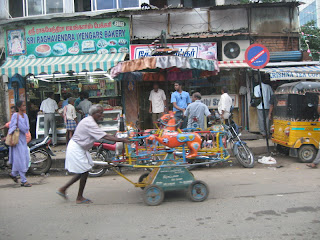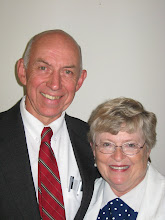
Last night we went to the Pathway Christmas program and catered banquet. Here you see Sister Dosdall in her new churidhar, eating Tamil style, with fingers, off a banana leaf. The pictures of the performance didn't turn out very well, but there was two hours of singing and skits from the three facilities, the highlight of which was the nativity pageant acted out by the mentally handicapped children. "Mary", who could not even walk, was carried to the center of the stage where she held her baby doll and smiled sweetly through the performance, while costumed donkeys and sheep and shepherds and wise men all did their things.


























